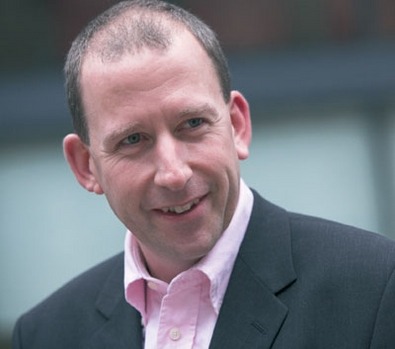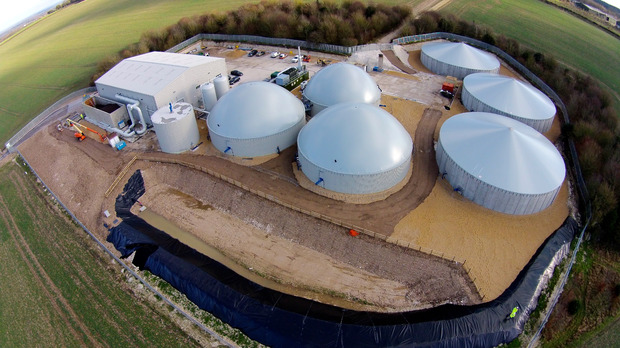There’s something about AD
3 Sep 2014
This summer saw a flurry of acquisitions in the UK’s anaerobic digestion market. John McKenna looks at what makes the sector so attractive
For such a small sector, the anaerobic digestion (AD) market managed to make big waves this summer.
Within a few days of each other in July two blue chip companies announced acquisitions of UK firms specialising in AD project delivery.
First came GE Power and Water’s acquisition of AD design and build firm Monsal, based in Mansfield, Nottinghamshire. The company has installed over 220 anaerobic digesters in the UK, ranging in size from dedicated power plants to micro-systems used onsite at a range of commercial, industrial and agricultural properties. Considering that the number of dedicated AD plants in the UK currently stands at just 145 (see box below), it is fair to say Monsal is a significant player in the market.
GE’s acquisition of Monsal was closely followed by the engineering consultancy business of outsourcing giant Capita, which acquired project management firm Projen. The Cheshire-based company has expertise in a range of process sectors in addition to AD, including chemicals, pharmaceuticals and downstream oil & gas.
It’s not surprising that companies like GE and Capita are looking at the industry
ADBA chief executive Charlotte Morton
Both GE and Capita played up their acquisitions’ AD expertise when announcing the deals, with Capita claiming that “in recent years [Projen] has expanded into the bioenergy field” and was “particularly focussed on the development, design and build of anaerobic digestion plants in the energy from waste market”.
However, when speaking to Process Engineering, Capita executive director of design and management Simon Birchall stressed that the overriding benefit of the acquisition was to give the engineering business, which is largely grounded in civil engineering, access to the process sectors that it has not traditionally worked in.
“The reason we acquired Projen was partly because of their AD expertise, but mainly because the acquisition gives us access to a number of sectors that we are not particularly strong in,” says Birchall.
“We like the management team there, like the business, it has a very strong client base and we felt by acquiring them we gave our team strength in depth.”
GE also had its own specific reasons for acquiring Monsal: it has based the new acquisition within its Water and Process Technologies division and its general manager Yuvbir Singh tells Process Engineering that the firm regards Monsal’s AD technology as having the potential to be the missing link in GE’s energy management solutions for the wastewater sector.
“One of our priorities is to decrease energy consumption in water effluent treatment,” says Singh.
“[To do this] we have our membrane bioreactor and our Jenbacher gas engines.”
Through filtration and biological processes, membrane bioreactors produce high quality effluent using equipment that typically has a much smaller footprint and lower energy consumption than traditional wastewater treatment processes.
GE’s Jenbacher gas engines, meanwhile, are designed to convert a range of different types of gas into electricity and range in size from 0.25MW to 9.5MW. “What we don’t have is the piece in between to convert the sludge left over from the membrane bioreactor treatment into gas,” adds Singh. “The Monsal acquisition fills that gap.”
Why AD?
AD is term applied to a range of processes where organic material is broken down by micro-organisms in the absence of oxygen, typically occurring in a sealed tank. The AD processes produces a methane-rich gas that can be used as a fuel and a digestate, which provides a source of nutrients that can be used as a fertiliser.
It is no coincidence that the firms GE and Capita have acquired bring AD expertise that is based in the UK.
While AD technology itself is not particularly new, a perfect storm of high energy prices, increasing landfill costs for waste and a range of government incentives have led to a significant ramping up of the UK market in recent years. A feed-in tariff for electricity produced by AD was introduced in 2010, while further support was made available through the Renewable Heat Incentive (RHI), with payments offered for biogas fed into the grid.
At the same time Landfill Tax has risen by £8 each year since 2010 to the current price of £80 per tonne, making sending waste to AD increasingly costcompetitive when compared to traditional waste disposal.
Charlotte Morton, chief executive of trade body the Anaerobic Digestion and Biogas Association (ADBA), says there was a “time lag” between the different incentives coming into being and the ramping up of the market, and this has resulted in the strong growth of the sector over the past year. “The FIT came in during 2010 and the RHI in January 2012,” says Morton.
“The incentives, people need to see them before they make investment decisions, and it then takes 12 to 18 months to get planning permission.”
She says it was “not surprising that companies like GE and Capita are looking at the industry” because, particularly for companies in the food and drink sector, AD is a “win-win solution” that was “improving the bottom AD could mirror the line in terms of cost of energy and removing a waste problem”.
UK AD AT A GLANCE
The AD market has grown rapidly since 2010, reaching the current 154 MW electrical equivalent capacity (between electricity and biomethane) from 145 plants. According to the Anaerobic Digestion and Biogas Association (ADBA) the increase in capacity each year since 2010 has been in the range 26-32 MWe-equivalent (across 20-30 new plants each year). ADBA’s Market Update for July predicts that 2014 should be a big year, with capacity increasing by a larger amount than this due to uptake of biomethane, as well as significant growth in the number of electricity plants. In addition to the four already commissioned biomethane plants (three supported under the Renewable Heat Incentive [RHI]), ABDA is aware of a further 37 in the pipeline, which could deliver 10-15 plants under the RHI this year and a further 15 next year. These include food waste, agricultural, sewage and industrial effluent treatment plants.
To read this article in full, please click on the link to a pdf above.





